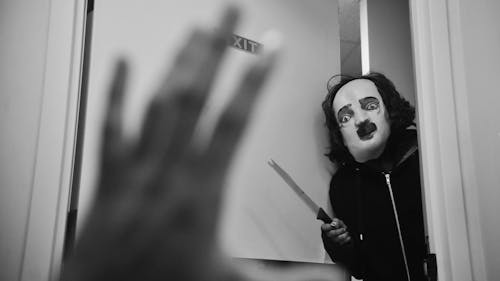Rutgers psychiatry professor uses classic Halloween movies to study psychopathology

In watching horror movies, Anthony Tobia, associate professor in the Department of Psychiatry at Robert Wood Johnson Medical School said audiences see some part of themselves projected on the screen that may cause them to feel anxious.
For the general viewer, Tobia said, Night of the Living Dead (1968), directed by George Romero is a recreation of an even older film, The Earth Dies Screaming (1964), directed by Terence Fisher.
Through psychiatric analysis, Tobia saw in the film that there was a deep, human dynamic in a time where people were threatened and the zombie characters were a metaphor for the Cold War.
“We saw the way people could behave when pressured and stressed. (George) Romero, in 1968, kind of captures that because the entire movie is in a farmhouse,” he said. “The movie, while officially about zombies, is really about anything but. The zombies are only a metaphor and the focus is really on the group dynamic (of the characters) and how we can act like monsters under times of significant stress.”
The "31 Days of Halloween" is an academic project that Tobia and a select group of medical students at RWJMS conjured up within the context of innovative ideas that incorporate pop culture into education.
“'31 Days of Halloween' is something I always wanted to do,” he said. “The students were absolutely on board. We came up with a very quick list with the specific movies we wanted to show on particular days. We really wanted them to be attached to the dates somehow. We didn’t want this to just be a ‘top 31’ list.”
The films were divided up among students before the project began, and now it is up to the individual, assigned medical student to watch the movie, create an analysis and write a blog post.
As part of the process of watching and analyzing a film, students also are made to answer the question of how the film makes them feel. Tobia said when he and the students discuss the film after watching it, they talk about how it may have made them feel scared or anxious.
Once students are made aware of their movie-induced emotions, the next question Tobia asks is why.
Christine Annibali, a RWJMS fourth-year student, is a member of the elective “Research in Curriculum Development: Applying Movie Themes to a Psychiatry Curriculum.” With several of her classmates, Annibali develops new methods and uses different venues to reinforce the psychopathology that students learn from their traditional medical education.
“Viewing movies as a teaching technique allows students from all specialties and interests to enjoy what they are watching, but also learn more about psychiatry and see how psychiatry is truly evident outside of medicine,” she said. “Using popular culture often helps individuals, like myself, make personal associations to information that may be difficult to grasp in the traditional learning environment.”
Annibali said using movies as an avenue to teach and emphasize the psychopathology medical students observe during their clinical experience helps her have a better understanding of her own patients and perhaps even improve the level of care which she will provide to them as a future health care provider.
Michael Ullo, a RWJMS fourth-year student, is part of the group of students who critically analyze the horror films selected for the month of October.
“The experience has been incredibly rewarding, both personally and professionally. I have a newfound appreciation for the mainstream portrayal of psychiatric conditions and have honed in on my skills to identify subtle examples of psychopathology,” he said.
Each blog post written references a unique disorder in the Diagnostic and Statistical Manual of Mental Disorders, Ullo said. Circling from educational material to pop culture and back to the material makes the process very educational and memorable, especially for a psychiatrist in training.
Tobia aims to teach psychiatry to residents and medical students in new and creative ways, said RWJMS third-year student and psychiatry resident Maggie Yesalavage.
In this case, she does not think the assignment is so much about analyzing the movies as much as it is to use the movies as a vehicle to remember the pathology.
“Bottom line, I think it's a great way to de-stigmatize mental illness and to get people away from saying, "Oh, they're just crazy," and instead really look at the underlying etiology of their behavior,” Yesalavage said. “And we're using something from pop culture to do that, which makes it palatable for anyone.”



